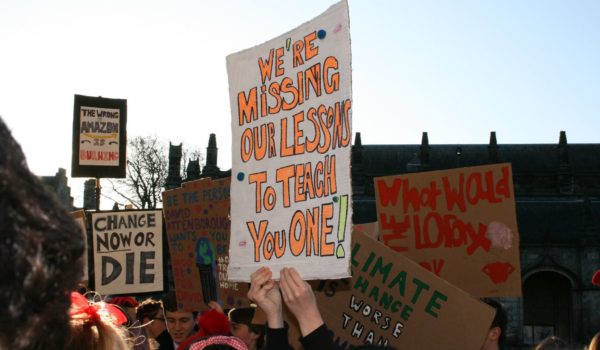The BBC recently released (or not so recently, I’m really bad at getting through shows) Mrs America, a programme that follows the journey of the ERA (Equal Rights Amendment in the US) and the key figures involved in the fight for women’s rights. While the show does contain fictional characters and events, they all help to highlight the integral aspects and double standards surrounding the very real pursuit for gender equality.
It’s important to state from the beginning that the ERA still has not been ratified by the states in the US. There is still no ERA. One of the most perplexing aspects of the history of women’s rights campaigns is the backlash against women from women. Women’s rights history is complicated, and the ERA is no exception. The main reason for the failure of the ERA was due to a group, STOP ERA, formed by Phyllis Schlafly in the 1970s. She did so claiming a concern for same-sex public bathrooms, lesbianism, female drafting and the general destruction of the typical heteronormative American household.
The BBC programme opens by first following the life of Phyllis Schlafly, which I have to say was personally a very odd experience. When watching a show, you naturally tend to affiliate yourself with the character you share the most experiences with, the protagonist. You are essentially their shadow, and through the process you begin to develop a bond with them. It’s clever. Under ordinary circumstances, Schlafly would be one of the last people on the planet that I would want to share such a connection with. I’m a feminist after all. But I did, and I got to know her.
One of the most alarming realisations I had during the show stemmed from this rather clever technique. I found that I do in fact have something in common with Schlafly. We both genuinely believe in our causes and that it is what is best for women. The campaign against the ERA wasn’t as simple as an evil villain in a Bond plot, or the classic war between good versus evil. In a sense all the women in the show were united in their position as opinionated women who acted on their beliefs. Those fighting against the ERA were strong women, which is why it’s so difficult to wrap your head around their stance against female empowerment.
It was also a highly hypocritical stance, to be politically active in order to encourage women to remain in their traditional domestic roles, reliant on husbands. In the show this is highlighted through the relationship between Phyllis and her husband Fred, and how her political activism impacts their domestic way of life. The expectation for childcare and housework falls entirely on Phyllis, and in a couples debate on “Tomorrow With Tom Snyder” with feminist Brenda Feigen and her husband, Fred claims that he “wear[s] the trousers” and that as a wife Phyllis is “submissive”. Because of the power she has from her politic platform, her husband’s is threatened, and he feels the need to establish her as inferior. This demonstrates that Schlafly’s activism undermines the very misogynistic family values she is fighting for. In the show Fred is repeatedly referred to as her “lawyer husband”; she is the one with the fame and the power, he is hers instead of vice versa. She condemns female empowerment from a place of power. She is a hypocrite.
Additionally, though Schlafly believed she was helping the ‘homemakers’ of America and giving them a voice in politics, there were clear limits to this. One particular character, Pamela, was a member of Schlafly’s campaign and was a victim of domestic violence. However, despite being well aware of this, Schlafly did nothing. She told Pamela that she should try harder, appease him, help him to feel like “the king of his castle” otherwise “they act out”, and to be grateful for what he provides. Schlafly didn’t care, instead she cared about conformity. It was more important for Pamela to remain a steady and provided for housewife in an archetypal American suburban household than find a safe haven. Her care for women is therefore not as genuine as she would have people believe. She didn’t want to give the housewife a voice, she just wants to voice her own oppressive ideals surrounding their way of life.
This is realised through another one of Schlafly’s followers, Alice Macray, who like Pamela is fictional but plays a key role in highlighting the double standards of the campaign to stop the ERA. She starts off a devoted supporter of Phyllis, but when she ends up having to spend time away from Phyllis in Houston for the National Women’s Conference she begins to doubt her belief in the cause. In the years of defending the role of the housewife, they have effectively become the “working girls”, as Bella Abzug calls them, having learnt all the essential tasks needed to work in an office and it was Phyllis who led them down that path. After drinking too much she begins a journey all around the building, meeting women from all walks of life and being greeted with open arms. All the time having illusions of an overbearing snappy Phyllis barking at her. Alice realises that what was once a simple campaign not to be overlooked as a housewife had resulted in her being complicit in the active destruction of any form of progression for women. In order to oppose certain aspects of the ERA, they had to oppose the entirety of what it stood for.
Another reason for this absolutist attitude stems, oddly enough, from accommodation. In 1975 Schlafly allied with the far-right evangelist Lottie Beth Hobbs in order to grow her numbers. The acceptance of groups of women despite largely prejudiced views was also seen much earlier on in the series in episode 3, which mainly followed the journey of Shirley Chrisholm, an African American woman who ran as a candidate in the Democratic presidential campaign in 1972. In this episode, Shirley’s attempt to break down the traditional, straight white male barriers in politics and general society is presented alongside Schlafly accommodating for explicitly racist individuals within the STOP ERA campaign. The intersectionality of gender and race is central to this particular episode. Racism is an inconvenience but not a deal breaker for Schlafly, while in the ERA campaign it is also not a priority for white feminists. The beginning of the episode sees Shirley walking in on the headquarters of ERA, and while she is greeted with friendly faces, those faces are more or less entirely white. Shirley highlights the lack of racial representation on the side of feminists with the campaign having a clear focus on white female progression. Everything else, even if deemed important, is still secondary.
The lack of intersectionality in feminism is an integral part of its history and is still very much a present-day issue. For too long too many women have been neglected not only by society but by feminism also. Women being left behind was a reality on the side of those campaigning for the ERA as well as those against it. Compromise was a key part on both ends, with the ERA campaign making several. The third episode sees characters discouraging Shirley from running in the 1972 campaign, including Bella Abzug, on the grounds that the world isn’t ready for a candidate that is both black and female. Compromise. The world wasn’t ready for the full front of intersectional feminism in the mid to late twentieth century. It’s true, but does that make the intentional disempowerment of marginalised groups permissible? No. And that’s not debatable. If you think it’s debatable, feel free to stop calling yourself a feminist. Once you start prioritising one woman over another you are longer valuing equality. Yes, the path for intersectional feminism would have been difficult, more difficult than white dominated feminism, and perhaps it would have taken longer to get where we are but at what cost? Feminism left countless women behind anyway.
Rights that didn’t immediately impact the key figures in the show, particular Bella Abzug, were considered expendable, and other leaders including the famous Gloria Steinem weren’t exactly rushing to correct her. In the final push for the ratification of the ERA, Abzug suggests that the Amendment be changed to not include sexual preference to make it more digestible to a patriarchal homophobic society. Sexual orientation was accepted on a whole by the ERA until it threatened the rights of the heterosexual white woman. While this did not end up happening, sexual preference remained, the problem of inequality within a movement for equality was still raised, much like it was on the issue of ethnic representation. It still existed and it still exists. Feminism must be intersectional to be feminism, but it is not entirely there yet.
Mrs America is a must watch for anyone interested in learning more about women’s equality. Not only does it provide the historical detail for the ERA, but it really develops the key features and inconsistencies surrounding both sides of the campaign. It does not idealise the pursuit for female equality as all inclusive, nor does it present those campaigning against the ERA as raging monsters. Both sides neglected women, while STOP ERA effectively ended up opposing women’s rights in general. The ERA was by no means faultless, and the lack of unwavering solidarity for all women is clear in that there has only been a push for intersectional feminism in recent years.









Comments